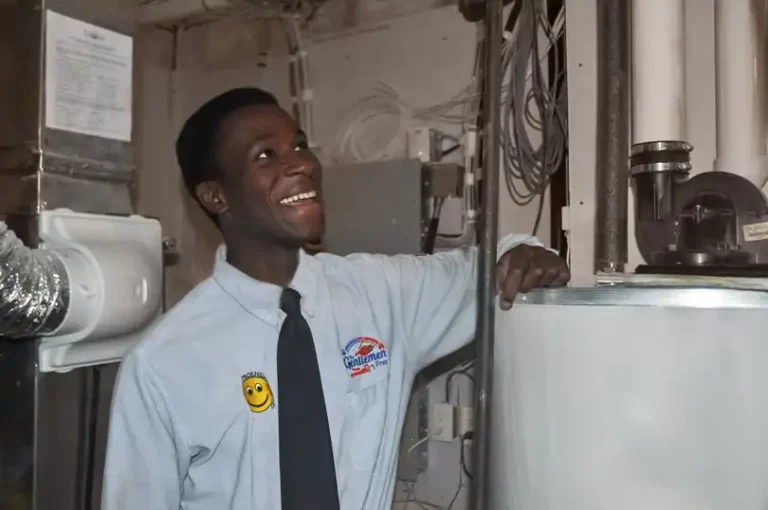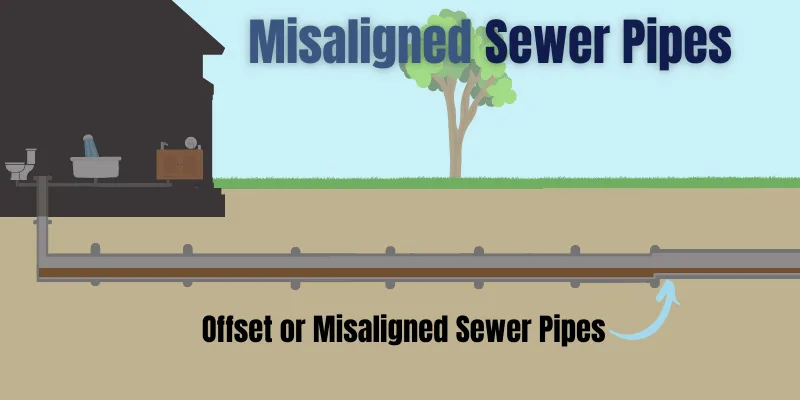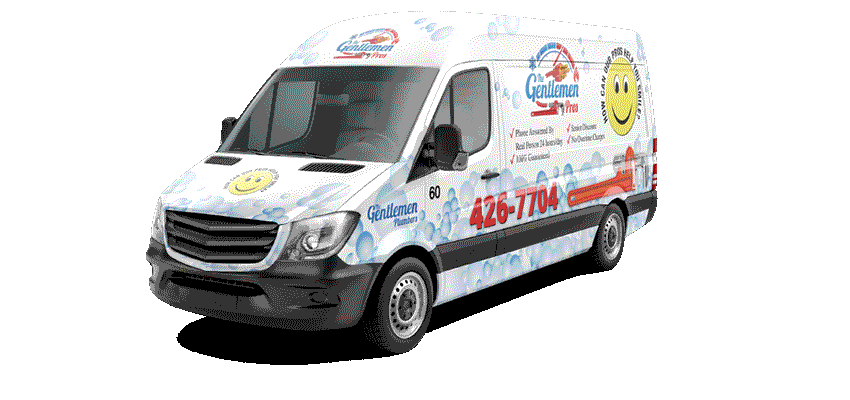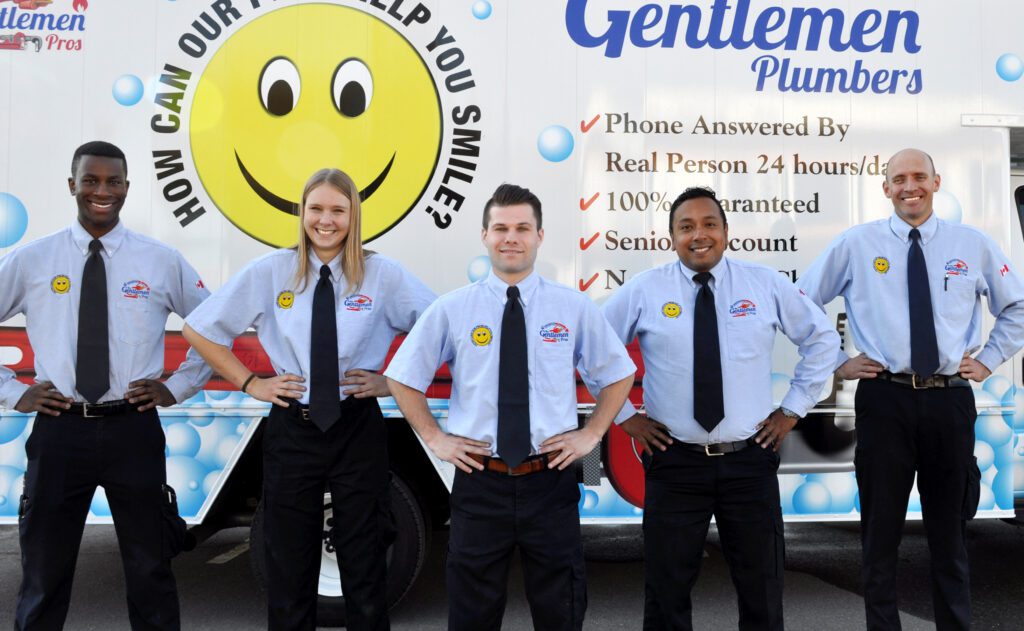
Same Day Service
Since 1992
Call The Gentleman Pros Now!
(403) 754-6648

Working sewer pipes is something we take for granted until there is a problem. Read on to learn why sewer problems happen, solutions to repair your sewer, and how to prevent a sewer emergency.
“Matt was awesome!!! Friendly, professional, and very knowledgeable. If I could give him 8 stars, I would. Explained all so I would understand and went over and above!”

Most often homeowners discover a problem in their sewer line when they have an emergency sewer backup.
If you don’t know what an emergency sewer backup is, feel glad! (Most likely you have never experienced one.)
An emergency sewer backup is when something is clogging the main sewer line from your home so that sewage waste comes back into your home. It is awful. If this happens, call a plumber immediately, and don’t drain another sink, tub, or appliance. Do not flush another toilet.
The number one sign of a broken sewer pipe is an emergency sewer backup. Prevent an emergency by scheduling a sewer line camera inspection to evaluate the health of your sewer line.
A clogged sewer line is an emergency. A backup indicates there is a major problem with your sewer line. Until the line is cleared do not flush a toilet, drain an appliance, or sink or bathtub.
The main sewer line needed to be cleared before it can be repaired, or replaced.

The main sewer line is also called the main drain, main sewer, sewer, or sewer drain.
Don’t confuse the main sewer line with regular drain pipes running through your home. The main drain is larger in diameter. The main sewer line has the important job of connecting the waste from the house to the city sewer lines.
If you have a septic tank the main sewer line connects the drains in the home to the septic tank.
If something should happen to the sewer line, like damage or a clog, the sewage will flow back to the home. It will enter the house on the lowest level through the basement drains, such as a floor drain, bathtub or shower, or even the main sewer cleanout.
Sewer backups are disgusting and cause a lot of damage. Picture your basement being flooded with sewage. Yuck!!
The main drain can be accessed through the main sewer cleanout. It will most likely be found in a utility room in the basement. (In warmer climates, they can be found in the yard but not likely in Red Deer or Alberta.)
The life of your sewer line depends on your pipe’s material, and how well the pipe was installed if the ground has shifted around the pipe. If your sewer line is more than 50 years old it may be time for a replacement.

Reasons you may need to replace your main sewer line or have a sewer backup:
Sewer pipes don’t last forever.
Plastic ABS or PVC sewer pipes became common in the 1970s. They have the longest projected life.

Before 1970, clay, cast iron, and no corrode pipe (sometimes called Orangeburg pipe) were common sewer pipe materials. Castiron rusts and breaks down, and joint seals wear out. Clay pipes are prone to cracking, and seals breaking over time. No-corrode pipes are prone to collapse over time. Read more about the history of sewer pipes to understand the different materials that were used and the pitfalls of each kind. (Link to History of Sewer Lines)
A pipe belly is when the main sewer line begins to sag and create a belly. Unfortunately, waste gets trapped in the belly, and a clog can form. A sewer backup is the result of a clog big enough that waste can’t pass through. There are many different ways to fix or repair sewer lines, but the only way to fix a pipe belly is to replace the pipe.
A pipe belly is formed when the earth around the pipe shifts or doesn’t support the weight of the pipe.

This could be the result of a poorly installed sewer line or could be the result of the ground shifting around the sewer line.
Pipe misalignments happen when the joints of the pipe aren’t properly aligned.
Like pipe bellies, this can be the result of shifting ground around the pipe, or it could be a result of weak pipe joints. Misalignments can impact the slope of the sewer pipe and lead to leaks, clogs and potentially root invasions.
Misalignments can be fixed by digging up the sewer pipes and realigning the pipes or doing a partial pipe replacement.

New sewer lines can be installed inside an existing drain with a method called pipe lining. (Link to pipelining article.)
Pipelining is done when a sleeve is pulled through an existing pipe with a machine. The sleeve is saturated in epoxy and then cured in place.
The result is a new pipe within the existing pipe.
The advantage of pipelining is that no joints are holding the pipe together, it is just one continuous line. Joints are most often the first thing to break down in a pipe.
Another advantage is that a full excavation is avoided. If your sewer line is underneath a fence, deck, or other structure, this is especially convenient.
Unfortunately, the drawbacks are that the pipe can not have a belly, misalignment or have collapsed to qualify for a pipe lining.
A sewer line camera inspection (link) will determine if your sewer line is a good candidate for a pipe liner.
In addition to pipelining, as mentioned above, pipe bursting is another method to replace your sewer line without having to dig or excavate your existing sewer pipes.

Pipe bursting is similar to pipelining, in that a machine can pull a new pipeline through the existing sewer line, but there are some differences.
Pipe bursting does not require a full excavation, but does require a small excavation to insert the equipment into the sewer line.
Unlike a sewer liner, pipe bursting requires a machine to burst the existing pipe as it pulls a new pipe in place.
Pipe bursting can be used in most situations, where a pipe liner is limited to a pipe that may be leaking, but holds its shape, does not belly and has the proper slope.
Read more about trenchless pipe replacement
Other ways to fix a damaged waste pipe or sewer line, include a full excavation or partial excavation.

In these situations, an excavation team will dig around your sewer pipe. The plumbing technicians will remove your old sewer pipes, and replace them with new sewer pipes. In Red Deer and central Alberta, most sewer pipes are buried deep beneath the ground. A pipe replacement can be done any time of year but is easiest in warmer weather.
Pipe replacement and excavation are not ideal when the pipe is below a fence, deck or driveway, which would require extra demolition and then rebuilding or repair.
The area will have to be landscaped again after the excavation and backfilling is complete.
A partial sewer line repair is similar, but only replaces part of the sewer line. This is a good option when there is only one problematic area of the sewer line.
Depending on the type of repair will depend on how long the repair will take and how many people are needed to carry out the job.
Pipe lining and pipe bursting can most often be completed in one day, while a full sewer line replacement could take 2 or more days.

In short, you are!
The homeowner is responsible for maintaining the sewer lines with their property. If roots from the neighbour or city’s property invade your sewer line, it is still up to you to maintain and repair your sewer line.
Most often big sewer line emergencies, such as a sewer backup, can be avoided if a regular camera inspection is done on your sewer line. You can catch small problems before they turn into big problems causing more costs!



